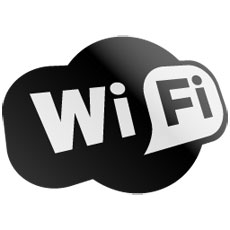It is estimated that there were over one billion Wi-Fi enabled technological products shipped worldwide in 2011. Apart from smartphones, tablets, laptops and PCs, in our increasingly connected world we are now seeing Wi-Fi enabled smart TVs, refrigerators, ovens and a variety of other products.
Traditionally, Wi-Fi technology has been dependent upon a Wi-Fi access point or hotspot. Although these have served us well, they were not originally designed to handle the high demand that a wide range of devices and appliances have started to place on them. Manufacturers are now looking at ways to reduce this burden. One of the more prominent proposals is that each device becomes a kind of hotspot in itself.
The idea is that,in the future, each device that requiresa Wi-Fi connection to communicate with another nearby will incorporate technology that enables them to bypass hotspots and connect directly via Wi-Fi Direct. Wi-Fi-Direct-enabled devices will be able to print, sync and share content, such as games and videos, via an automated network ofuser-approved devices that will circumvent the need for hotspot passwords. Despite the name, this technology, in effect, means no internet connection will be involved in such communication at all.
Some manufacturers have already released products with this technology incorporated. Android 4.0 was developed to enable Wi-Fi Direct devices such as an Android tablets to connect with each other. However,so far, there has been little agreement on a standard implementation for Wi-Fi Direct. That is, until recently.The Wi-Fi Alliance, globally responsible for the certification of Wi-Fi enabled products, recently announced the release of theMiracast streaming standard, a much awaited solution that promises to revolutionise this technology.
 That means regardless of brand or operating system, any device fitted with Wi-Fi Direct will now be able to seamlessly communicate with another enabled device. For some this may sound a bit like Bluetooth (and that’s because it is!); however, Wi-Fi Direct operates over much larger distances, and is a far more intelligent technology.Enabled devices will automatically recognize other enabled devices within range. So, if a user wants to send a video, his or her device will display only those otherappliances that are capableof playing video.
That means regardless of brand or operating system, any device fitted with Wi-Fi Direct will now be able to seamlessly communicate with another enabled device. For some this may sound a bit like Bluetooth (and that’s because it is!); however, Wi-Fi Direct operates over much larger distances, and is a far more intelligent technology.Enabled devices will automatically recognize other enabled devices within range. So, if a user wants to send a video, his or her device will display only those otherappliances that are capableof playing video.
To answer to any security issues, Wi-Fi Protected Setup will be the standard way of controlling which devices can connect. After all, you may not want your neighbours to know what you like to watch on TV, or send a print job to their printer by accident!
With Wi-Fi Direct devices now expected to increase fivefold over the next few years, this exciting new technology looks set to flourish.

